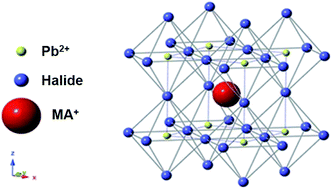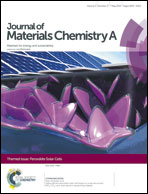Perovskite solar cells: film formation and properties
Abstract
Perovskite solar cells have received considerable attention in recent years as a promising material capable of developing high performance photovoltaic devices at a low cost. Their high absorption coefficient, tunable band gap, low temperature processing and abundant elemental constituents provide numerous advantages over most thin film absorber materials. In this review, we discuss the current status of CH3NH3PbX3 (X = I, Br, Cl) based photovoltaic devices and provide a comprehensive review of CH3NH3PbX3 device structures, film properties, fabrication methods, and photovoltaic performance. We emphasize the importance of perovskite film formation and properties in achieving highly efficient photovoltaic devices. The flexibility and simplicity of perovskite fabrication methods allow use of mesoporous and planar device architectures. A variety of processing techniques are currently employed to form the highest quality CH3NH3PbX3 films that include precursor modifications, thermal annealing and post-deposition treatments. Here we outline and discuss the resulting material qualities and device performances. Suggestions regarding needed improvements and future research directions are provided based on the current field of available literature.

- This article is part of the themed collection: Perovskite Solar Cells


 Please wait while we load your content...
Please wait while we load your content...